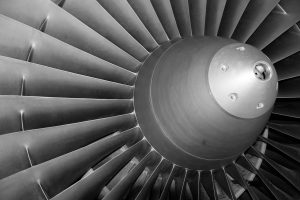422
View AMS Numbers >
Stainless Steel 422
Stainless Steel 422 is hardenable high-alloy Stainless Steel with a martensitic crystal structure and good resistance to corrosion. It is mainly used for manufacturing of parts that are subjected to high temperatures of up to 1200° F (649° C). With the right heat treatment, parts made of this steel can also have excellent mechanical properties depending on section, form, and application involved.
Stainless Steel 422 also has good resistance to scaling and oxidation and excellent creep-rupture properties at temperatures up to 1200° F (649° C). Among similar high-alloy steels with martensitic structure, Stainless Steel 422 has the highest electrical conductivity and a moderately high embodied cost. Stainless Steel 422 also has better strength at a higher temperature than the somewhat similar Steel 403.
This alloy is mainly used for manufacturing of buckets and blades for steam turbines, but also in the aerospace industry for manufacturing of high temperature bolting, valves and valve trim. Other less common applications of Stainless Steel 422 are in refineries, thermal pipe plants, pharmaceutical industry, oil refineries, textile industries, nuclear plants, chemical industry, etc.
Tech Steel & Materials offers Stainless Steel 422 in one sub-type specification and three shapes/forms:
- AMS 5655 (Bar, Forging, and Wire)
Chemical Composition of Stainless Steel 422
| Element | min | max |
| Carbon, C | 0.20 | 0.25 |
| Manganese, Mn | 0.20 | 0.60 |
| Silicon, Si | — | 1.0 |
| Sulfur, S | — | 0.030 |
| Phosphorus, P | — | 0.040 |
| Chromium, Cr | 11 | 13.50 |
| Tungsten, W | 0.75 | 1.25 |
| Nickel, Ni | 0.50 | 1.00 |
| Vanadium, V | 0.17 | 0.30 |
| Copper, Cu | — | 0.50 |
| Iron, Fe | — | *Balance |
*Not exclusively to the element mentioned, but that one predominates other elements that are used only in minimal quantities.
Fabrication and Working Instructions
Stainless Steel 422 is fairly easy to machine, but special care is needed to avoid galling if the parts are machined with sharp tools. The speed of machining should also be lower and consistent, accompanied by constant feed. Cobalt high-speed tools are recommended for best results.
While it is fairly easy to machine, Stainless Steel 422 can be difficult to weld. In order to prevent cracking of the welded parts, preheating is mandatory, followed by a post-weld stress relief of the weld itself at temperatures of 1100 – 1400° F (590 – 760° C) for 4 hours. The use of the AMS 5655 welding wire, available at Tech Steel & Materials will yield the best results.
As for forging, the parts should be preheated to 1200 – 1400° F (650 – 760° C) and then heated to 1900 – 2150° F (1040 – 1175° C). Slow cooling to room temperature is recommended, followed by annealing and tempering. If hardening is wanted on the forged parts, preheat to temperatures ranging from 1200 – 1400° F (650 – 760° C).
Mechanical and Physical Properties (Solution Heat Treated at Room Temperature)
| Property | Imperial | Metric |
| Density | 0.28 lb/in³ | 7.75 g/cc |
| Tensile Strength | 140 ksi | 965 MPa |
| Yield Strength at 0.2% Offset | 115 ksi | 793 MPa |
| Modulus of Elasticity | 190 – 210 GPa | 27557 – 30458 ksi |
| Poisson’s Ration | 0.27 – 0.30 | 0.27 – 0.30 |
| Elongation in 4D | 13% | 13% |
| Reduction of Area | 25% | 25% |
| Hardness, Rockwell B | 95 max | 95 max |
Thermal Properties
| Property | Imperial | Metric |
| Thermal Expansion | — | 11.2 x 10-6/ºC |
| Thermal Conductivity | — | 23.9 x W/m.K |
Heat Treatment
Thanks to the addition of Carbon in its structure, Stainless Steel 422 can be hardened and strengthened by standard heat treatments used for carbon steels such as hardening, annealing, and tempering. Depending on the wanted qualities, different combinations of these heat treatments are recommended. The highest corrosion resistance, for example, is attained in the hardened and tempered condition.
The recommended hardening of Stainless Steel 422 is done by heating to 1900° F (1040° C) followed by soaking and oil quenching. Parts with complex shapes can be marquenched (quenching at a temperature right above the martensite starting temperature) at 650° F (340° C). Tempering should be started after the part is fully cooled to room temperature.
The recommended annealing process for achieving martensitic microstructure is as followed – heat to 1350 – 1430° F (730 – 780° C) and soak for 4 hours, followed by furnace treatment and air cooling. With this treatment, hardness of Rc 21-25 is achieved, which may not be enough for some applications. If better hardness is wanted, heat to 1900° F (1040° C), then cool to 1275° F (690° C) and hold for 24-48 hours followed by air cooling to room temperature for the hardness of Rb 90-95 and a ferrite-carbide structure.


 Tech Steel & Materials
Tech Steel & Materials